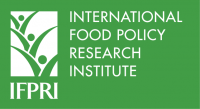
Fourteen percent of the food produced globally is lost during the post-harvest production stage before reaching the retail stage of the food system, according to the newly-released FAO 2019 State of Food and Agriculture (SOFA) report . While significant, this figure is less than an earlier FAO loss estimate of one-third of all food. Some regional losses are higher, reaching over 15% in North America and Europe and over 20% in Central and South Asia.
Governments, humanitarian agencies, and private sector actors have all recognized the important role that reducing food loss and waste plays in improving food security and nutrition, promoting sustainable environmental practices and natural resource use, and lowering food production costs. Target 12.3 of the Sustainable Development Goals (SDGs) calls for reducing per capita global food waste at the retail and consumer levels and food losses along global production and supply chains by half by 2030. This supports the other SDGs, including the SDG Target 2 goal of zero hunger by 2030.
Achieving these goals requires a proper understanding of how and when food loss and waste are occurring and to what degree. However, there is currently no universally accepted definition of those terms; this can make it difficult to set policy or a research agenda on the topic because stakeholders may be using the same terminology to refer to different phenomena. In recent years, IFPRI researchers and other experts have taken steps to create a more clear-cut definition and measurement methodology , including the measurement of quality and economic value along food value chains, not only of quantities lost. In addition, the FAO and the United Nations Environment Programme are developing the Food Loss Index (FLI) and the Food Waste Index (FWI). The SOFA 2019 report includes initial estimates from the FLI for the year 2016.
The report defines food loss and waste as a deterioration in food quantity or quality along the food supply chain. Food loss occurs from harvest/slaughter up to but not including retail; food waste at the retail or consumption level. This more nuanced definition allows for a clearer understanding of exactly where along the food value chain loss and waste occur.
In addition, the report measures food loss and waste in terms of economic value rather than more traditional physical terms such as weight. Measuring in tons can end up assigning inappropriately high loss figures to heavier, low-value products. SOFA 2019 report addresses this issue by putting a monetary value on food losses by product type, differentiating higher value items such as fruits and vegetables, for example.
The report finds that roots, tubers, and oilseeds, as well as fruits and vegetables, generally see higher rates of loss and waste than cereals and pulses along all stages of the food supply chain. The exception is on-farm losses and loss during transportation in Eastern and South-Eastern Asia, where loss of cereals and pulses is higher. The loss of cereals and pulses remains a significant problem, particularly in lower income regions like Africa south of the Sahara.
The report analyzes the causes of food losses, informed in part by a forthcoming IFPRI study. In lower income countries, fresh produce loss stems from poor storage infrastructure, such as a lack of refrigerated warehouses. In higher income countries, fruits and vegetables are often still lost during storage, due to improper management of storage temperatures and humidity levels or from overstocking.
For all types of food, the most critical point of loss occurs at on the farm, just after harvest, where inadequate storage facilities and poor handling practices play a significant role. Further along the supply chain for fruits, roots, and tubers, packaging and transportation are critical loss points.
While estimates for the FWI were not yet available, the SOFA 2019 report was able to examine causes of food waste at the retail and consumer level. Such waste often stems from consumer demand for aesthetic quality, perishable products’ limited shelf life, and over-buying and poor in-home storage by consumers. These types of food waste are more common in higher income countries.
Identifying where and to what extent food loss and waste occur is not enough, the report says; we must also understand how these things impact different actors along the food value chain, as well as different geographic populations. Such impacts—and the effects of efforts to reduce them—will not be the same for everyone. For example, reducing retail and consumption-level food waste could improve availability and access for consumers, but could also reduce demand, lowering incomes of farmers, processors, and traders. Understanding such impacts can help shape policies better targeted to specific populations and goals.
Strategies for reducing in food loss and waste should also be weighed in the context of environmental sustainability and food safety. Like any policy, the options will involve trade-offs, so policy makers, researchers, and other stakeholders need clarity on their effects across a broad range of potential impacts, such as greenhouse gas emissions. In order to balance the various priorities, including the SDGs, further research into the extent, causes, and effects of food loss and waste is needed at the global, regional, and national levels. In addition, countries and stakeholders should cooperate in the monitoring and evaluation of food loss and waste reduction to ensure those efforts are effective and not working at cross-purposes.
